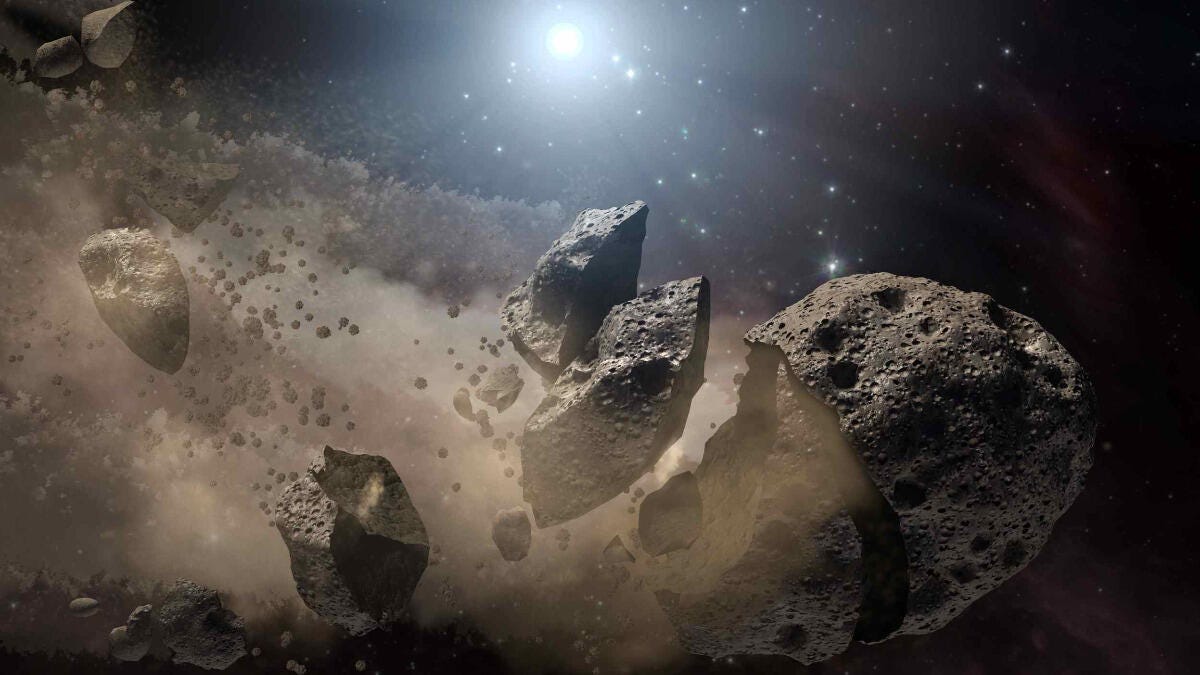Fridge-size asteroid snuck up on Earth by hiding behind the sun
It posed no danger, but was the third-closest fly-by of our planet.

The inner solar system is filled with space boulders that probably broke off of bigger bodies at some point.
A sneaky space rock sped by Antarctica on Sunday without any advance warning and narrowly avoided being fully incinerated by Earth's atmosphere.
Asteroid 2021 UA1 goes down as the third-closest fly-by of our planet by a near-Earth object that didn't end in an impact. The cosmic boulder is estimated to be about two meters (6.6 feet) in diameter, the size of a large appliance or a golf cart. Had it actually hit our planet, the vast majority of it would almost certainly have burned up in the atmosphere.
For comparison, the bolide that exploded over Russia in 2013, blowing out thousands of windows in the city of Chelyabinsk, was probably at least 20 times bigger, and only a small boulder survived to impact the surface in that instance.
Instead, 2021 UA1 passed over Antarctica on Sunday evening Pacific time at an altitude of about 1,800 miles (3,000 kilometers). That's higher than where the International Space Station orbits but significantly closer than the ring of large communications satellites in geostationary orbit. Asteroid 2020 QG passed just a little bit closer in August 2020, but the closest approach ever recorded in which the asteroid escaped unscathed came last November when 2020 VT4 flew overhead at nearly the same altitude as the ISS (around 250 miles or 400 kilometers up).
Newly-discovered #asteroid 2021 UA1 missed Antarctica by only 3000 km Sunday evening.
— Tony Dunn (@tony873004) October 27, 2021
It came from the daytime sky, so it was undiscoverable prior to closest approach.https://t.co/Y0zY7mAYue pic.twitter.com/R9VpMo2X9G
2021 UA approached us from the direction of the sun -- just like the Chelyabinsk bolide, which was undetected before impact -- making it impossible for astronomers to spot ahead of time. Upcoming missions like NASA's NEO Surveyor are designed to eliminate this blind spot.
The fact that the three closest passes ever observed have all come in the last 18 months isn't anything to lose sleep over. It doesn't mean asteroids are swarming Earth; actually, it reflects improvements in sky surveying technology and astronomers' ability to spot and track more near-Earth objects. If anything, more known asteroids should allow us to rest easier at night.

